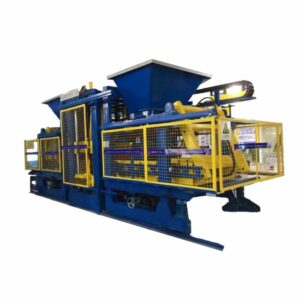Fully automatic block machines and semi-automatic block machines differ in terms of their automation level and the amount of human intervention required in the production process.
Here is a comparison of the two types of machines in terms of production capacity and quality:
Production capacity: Fully automatic block machines have a higher production capacity than semi-automatic block machines. This is because fully automatic machines can operate continuously for longer periods of time without the need for human intervention, leading to higher production rates and greater efficiency.
Quality: Both fully automatic and semi-automatic block machines can produce blocks with consistent quality and dimensions. However, fully automatic machines tend to have a higher degree of precision and accuracy due to their advanced automation technology, resulting in blocks with more consistent dimensions and fewer defects.
Labor requirements: Fully automatic block machines require minimal human intervention, while semi-automatic machines require some level of human operation and monitoring. block making machine price list This means that fully automatic machines have lower labor requirements and can operate with minimal supervision, while semi-automatic machines require more human involvement and may incur additional labor costs.
Cost: Fully automatic block machines are generally more expensive than semi-automatic machines due to their advanced automation technology. However, their higher production capacity and efficiency can result in cost savings over the long term.
Overall, fully automatic block machines offer higher production capacity, greater efficiency, and higher precision than semi-automatic machines. However, they are also more expensive and may not be necessary for all production requirements. The choice between fully automatic and semi-automatic block machines will depend on the specific needs of the construction project and the available budget.
What are some common defects that can occur in blocks produced by semi-automatic machines?
Semi-automatic block machines are capable of producing quality blocks, but they require some level of human intervention during the production process, which can increase the likelihood of defects.
Here are some common defects that can occur in blocks produced by semi-automatic machines:
Dimensional variation: Semi-automatic machines can produce blocks with dimensional variation if the operator does not ensure that the mixture is evenly distributed in the mold. This can result in blocks that are too large or too small, making them difficult to stack or fit together properly.
Surface defects: Surface defects, such as cracks or rough spots, can occur if the mixture is not properly compacted within the mold. This can be caused by improper vibration or insufficient pressure, which can result in a weak and brittle block.
Color variation: Color variation can occur in blocks produced by semi-automatic machines if the mixture is not properly mixed or if the pigments are not evenly distributed. This can result in blocks with uneven color or streaks, which can be unsightly and affect the appearance of the finished project.
Strength issues: Semi-automatic machines can produce blocks with strength issues if the mixture is not properly proportioned or if the curing process is not sufficient. This can result in blocks that are weak or brittle, making them prone to cracking or breaking under stress.
Shape defects: Shape defects can occur if the mold is not properly aligned or if the mixture is not evenly distributed within the mold. This can result in blocks that are misshapen or have uneven edges, making them difficult to stack or fit together properly.
Overall, the quality of blocks produced by semi-automatic machines depends on the skill and experience of the operator, as well as the quality and consistency of the raw materials used. It is important to ensure that the operator is properly trained and that the machine is properly maintained to minimize the risk of defects and ensure the production of quality blocks.
